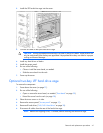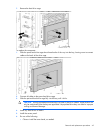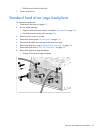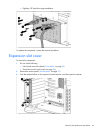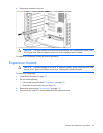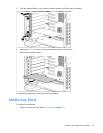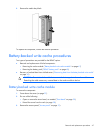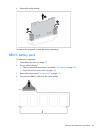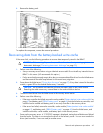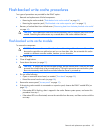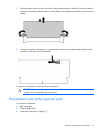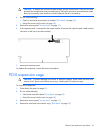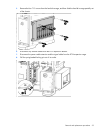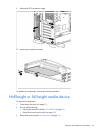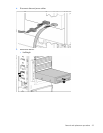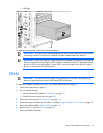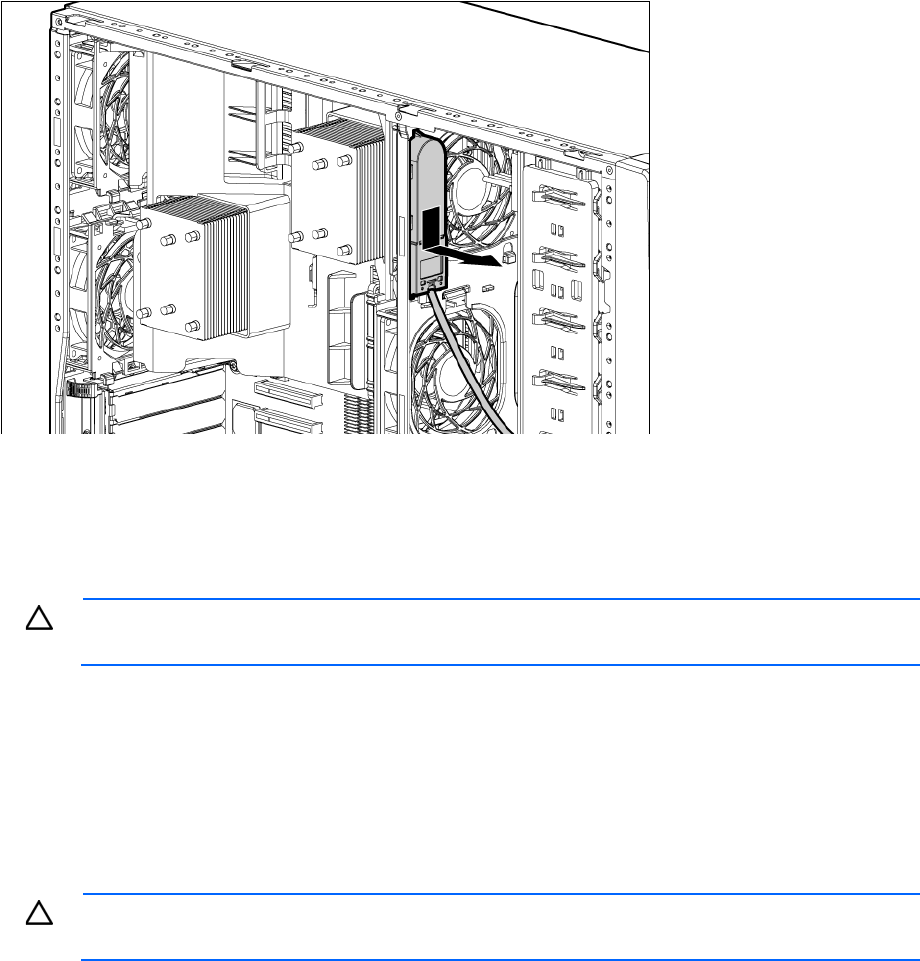
Removal and replacement procedures 49
5.
Remove the battery pack.
To replace the component, reverse the removal procedure.
Recovering data from the battery-backed write cache
If the server fails, use the following procedure to recover data temporarily stored in the BBWC.
CAUTION: Before starting this procedure, read the information about protecting against
electrostatic discharge ("Preventing electrostatic discharge" on page 29).
1. Perform one of the following:
o Set up a recovery server station using an identical server model. Do not install any internal drives or
BBWC in this server. (HP recommends this option.)
o Find a server that has enough empty drive bays to accommodate all the drives from the failed server
and that meets all the other requirements for drive and array migration.
2. Power down the failed server ("Power down the server" on page 27). If any data is stored in the cache
module, a green LED on the module flashes every 2 seconds.
CAUTION: Do not detach the cable that connects the battery pack to the cache module.
Detaching the cable causes any unsaved data in the cache module to be lost.
3. Transfer the hard drives from the failed server to the recovery server station.
4. Perform one of the following:
o If the array controller has failed, remove the cache module ("Battery-backed write cache module" on
page 47) and battery pack ("BBWC battery pack" on page 48) from the failed array controller, and
install the cache module and battery pack on an array controller in the recovery server.
o If the server has failed, remove the controller, cache module ("Battery-backed write cache module"
on page 47), and battery pack ("BBWC battery pack" on page 48) from the failed server, and
install the controller, cache module, and battery pack in the recovery server.
5. Power up the recovery server. A 1759 POST message is displayed, stating that valid data was flushed
from the cache. This data is now stored on the drives in the recovery server. You can now transfer the
drives (and controller, if one was used) to another server.



